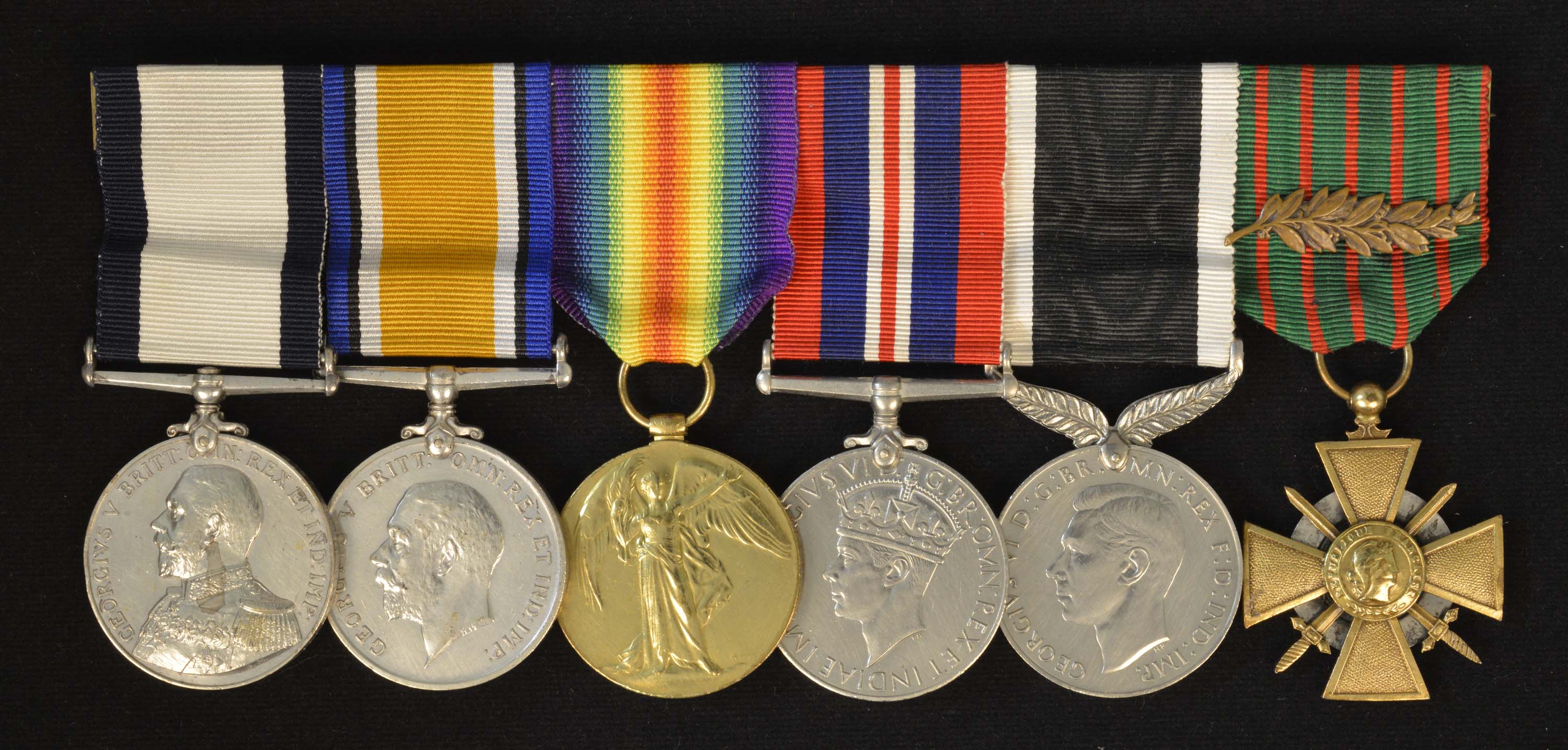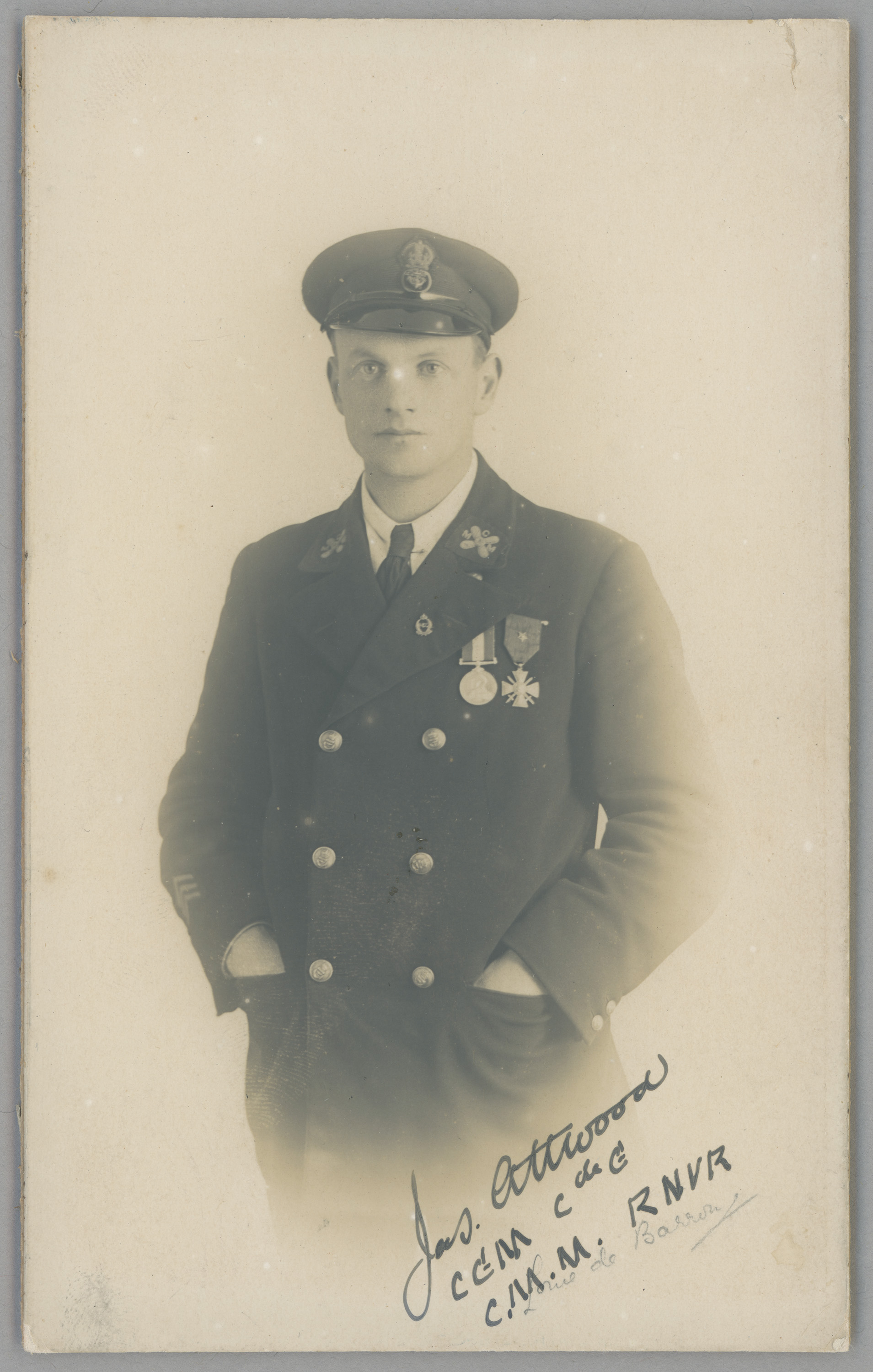

Display No. 17D
ATTWOOD, James Richard Nottage
James Attwood was a motor mechanic when he joined the Royal Naval Volunteer Reserve (RNVR) in Wellington in 1916 for service with the Royal Naval Auxiliary Patrol. In October of that year he sailed to England on the troop ship Willochra. Upon reaching England in December, he was posted to the RNVR and served as a motor mechanic on small craft. He served in the trawler HMS Halcyon II for much of 1917 and also spent time in HMS Kosmos which was stationed in Le Havre, France. Attwood was awarded a Conspicuous Gallantry Medal (CGM) and the Croix de Guerre for his courage and conduct during the Zeebrugge-Ostend raids which took place 22-23 April 1918. He was one of the ratings who volunteered to man the motor launches that were to rescue of the crew of the blockade ships. He served on the motor launch ML 283 and faced very heavy fire during the operation. Attwood was one of only two New Zealanders to be awarded the Conspicuous Gallantry Medal in the First World War. Attwood also received a Mentioned in Despatches (MiD) for his bravery. He served in HM Ships Arrogant and Hermione until the end of the war. He arrived back in New Zealand in May 1919. Attwood also volunteered for naval service in the Second World War but was denied due to his age and instead served in the Home Guard.
Awarded medal(s)
Medal Description [Left to Right]:
The Conspicuous Gallantry Medal
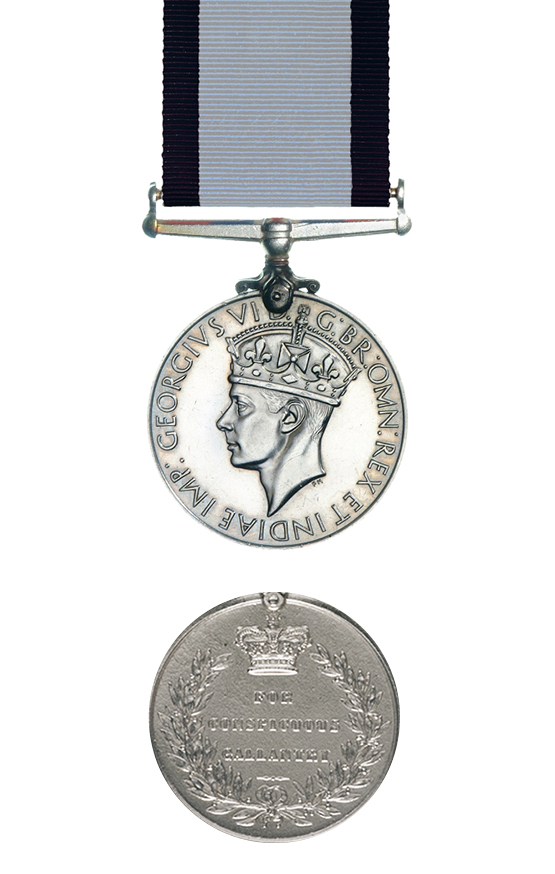
The Conspicuous Gallantry Medal (CGM) was instituted in 1855, as the Navy’s equivalent to the Distinguished Conduct Medal. It was awarded to senior and junior ratings. From 1942, its coverage was extended to Air Force personnel of equivalent ranks serving with the Navy. Different medal ribbons distinguish awards to Navy and Air Force recipients. The CGM was replaced in New Zealand in 1999, by the New Zealand Gallantry Star, which is awarded for outstanding gallantry in situations of danger.
The British War Medal
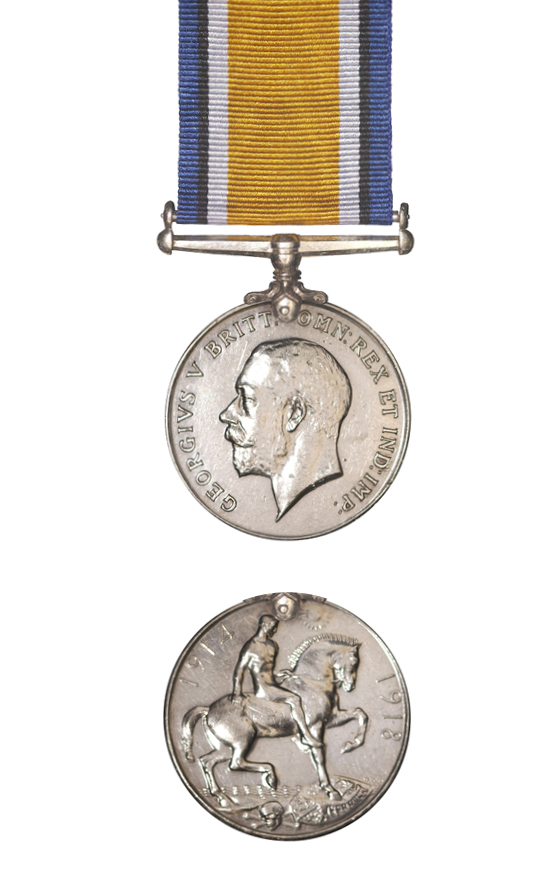
The British War Medal was instituted in 1919 to recognise the successful conclusion of the First World War (1914-1918). Its coverage was later extended to recognise service until 1920, recognising mine clearing operations at sea, and participation in operations in North and South Russia, the eastern Baltic, Siberia, the Black Sea and the Caspian Sea.
The Victory Medal
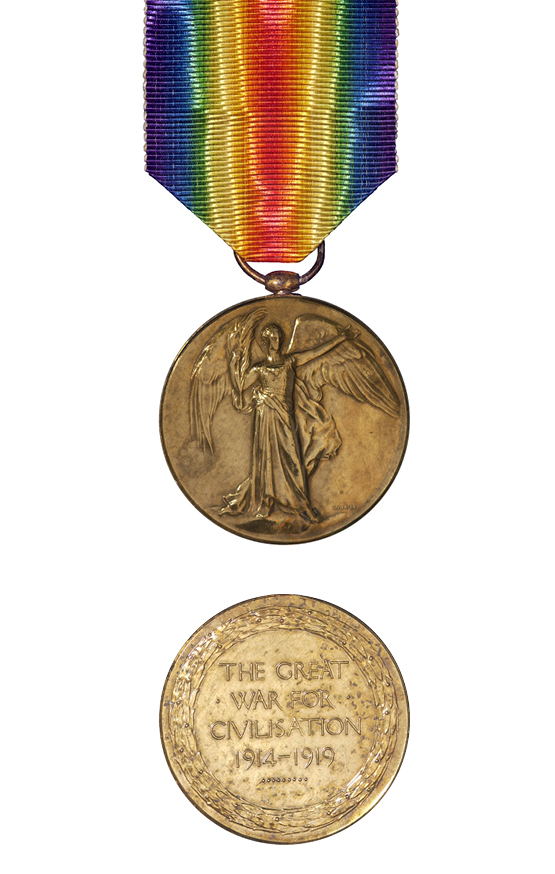
The Victory Medal was awarded in the First World War to all those who had already qualified for the 1914 Star or the 1914-15 Star, and to most persons who had already qualified for the British War Medal. The Victory Medal was awarded to all New Zealand troops serving overseas, except for those who arrived in Samoa after 30 August 1914 and those serving in Great Britain only. It has a unique double rainbow ribbon.
A bronze spray of oak leaves on the medal ribbon denotes that the recipient was Mentioned in Despatches during the period that the medal recognises. To be Mentioned in Despatches a member of the armed forces has had their name mentioned in an official report, written by a superior officer, and sent to a higher command. The report would describe the individual’s gallant or meritorious action in the face of the enemy.
The War Medal 1939-1945
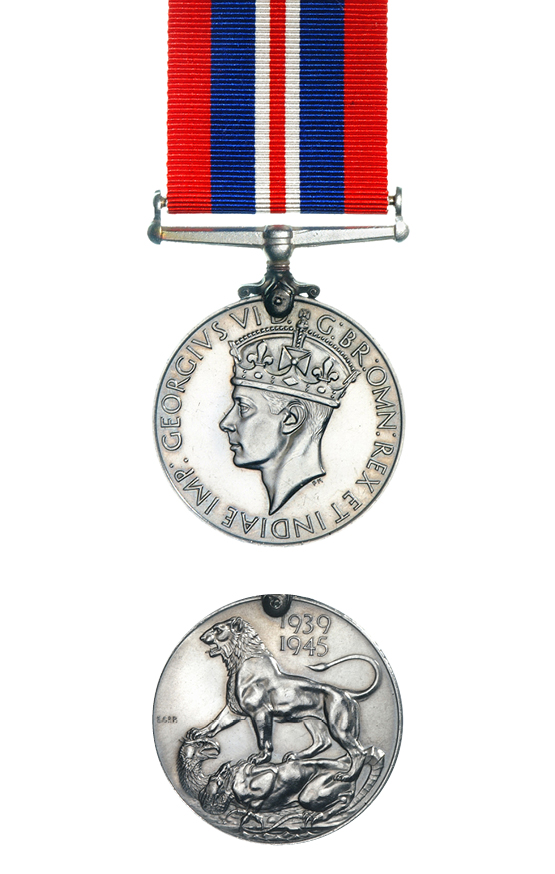
The War Medal 1939-45 was awarded across the British Commonwealth to all full-time members of the Armed Forces in the Second World War for 28 days service between 3 September 1939 and 2 September 1945, irrespective of where they were serving. The ribbon is the red, white, and blue of the (British) Union Flag. There is a narrow central red stripe with a narrow white stripe on either side. There are broad red stripes at either edge, the two intervening stripes being blue.
A bronze oak leaf on the medal ribbon denotes that the recipient was Mentioned in Despatches. To be Mentioned in Despatches a member of the armed forces had their name mentioned in an official report, written by a superior officer, and sent to a higher command. The report would describe the individual’s gallant or meritorious action in the face of the enemy.
The New Zealand War Service Medal
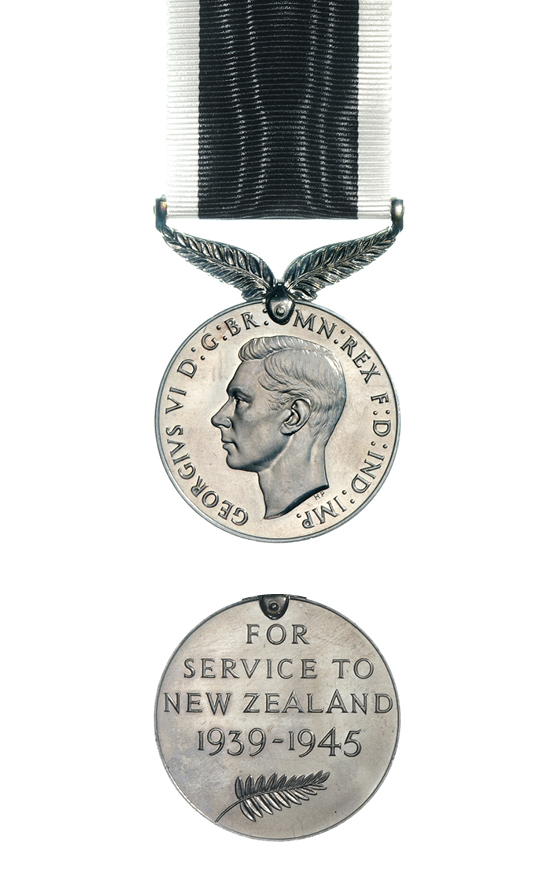
The New Zealand War Service Medal was awarded for 28 days’ full time service or six months’ part time service in the Second World War in any of the New Zealand Armed Forces including the Reserves, Naval Auxiliary Patrol Service, or Home Guard, between 3 September 1939 and 2 September 1945.
Croix de Guerre (France)
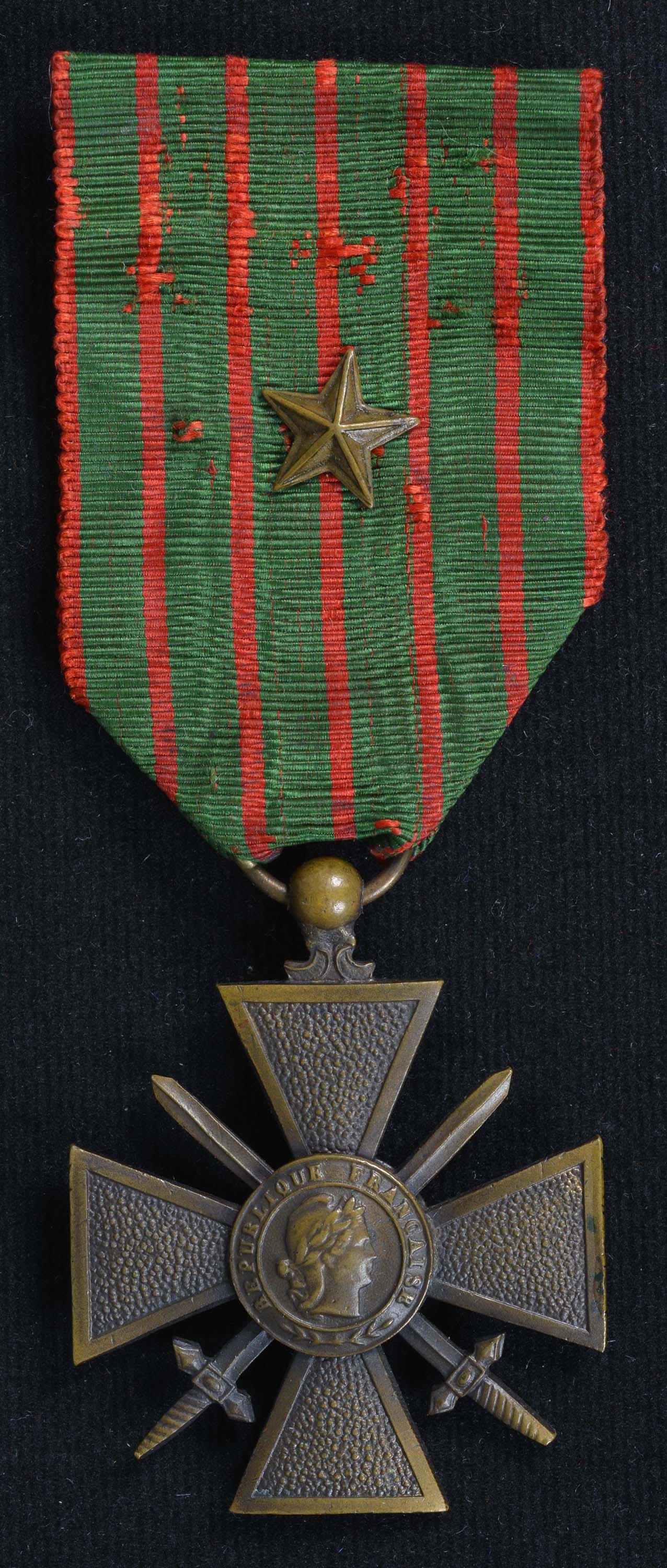
A French military decoration awarded during both the First and Second World Wars and in other conflicts. It may be awarded either as an individual award, or as a unit award to those soldiers who distinguish themselves by acts of heroism, involving combat with the enemy. The medal is awarded to those who have been ‘mentioned in despatches’, meaning a heroic deed or deeds were performed, meriting a citation from an individual’s headquarters unit.
A star or palm emblem in either bronze, silver, or gold would be attached to the ribbon indicating at what level the individual was recognised (i.e. regiment, division, corps, army). Please note this image of the medal includes a bronze star.

